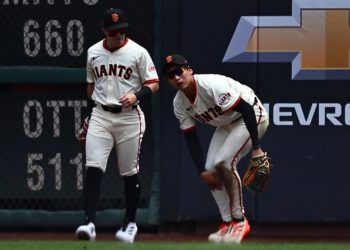Contact sheets — a positive print of a roll of negatives — evolved alongside 35-millimeter film as a convenient way to review small negatives: one roll of 35-millimeter film — or 12 frames of 120 film — fits neatly onto an 8 by 10 sheet of paper. The Times’s photo archive is stuffed with contact sheets containing circles, ticks or crosses from grease pencils, tangible evidence of the editing process.
The process of reviewing a contact sheet typically involved a loupe and a red grease pencil, and often some apprehension. With a single contact sheet, a photographer could assess all the decisions and hesitations, steps and missteps that went into taking the photo. “It’s all there,” the renowned photographer Henri Cartier-Bresson once said of contact sheets, “what surprises us is what we catch, what we miss, what disappears.”
The use of contact sheets as an editing tool lived and died in the 20th century; in the 21st century the rise of digital photography has made contact sheets a darkroom relic. Few photographers still use them as a tool, but their analog allure has generated a second life. After all, a contact sheet is everything a digital photograph isn’t: immutable, physical, finite.
They have been the subject of exhibitions, shows at galleries and photo books. At the Museum of Modern Art, you can see a contact sheet from Hans Namuth. Enlarged to stretch from floor to ceiling, it depicts the artists who lived on Coenties Slip, a street in the financial district of Manhattan.
With their grid format, contact sheets have been compared to the motion studies work of the 19th-century photographer Eadweard Muybridge. After his famous “horse in motion” photographs, Muybridge turned his attention to human movement. He photographed men and women in a wide variety of activities — pouring tea, playing leapfrog and much more — which he sequenced and displayed as grids.
The post The Analog Allure of Photographers’ Contact Sheets appeared first on New York Times.




